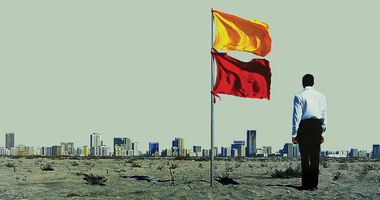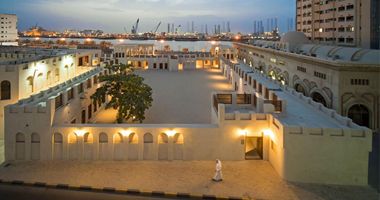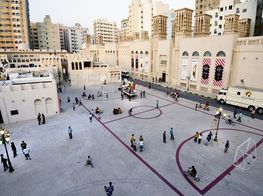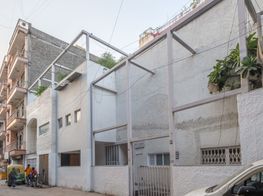Hoor Al-Qasimi
Hoor Al-Qasimi
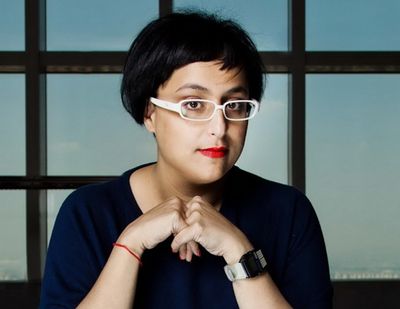
Hoor Al-Qasimi
Hoor Al-Qasimi is the President of the Sharjah Art Foundation and a practicing artist in her own right, with a BFA from the Slade School of Fine Art and an MA in Curating Contemporary Art from the Royal College of Art.
A prolific figure on the international art scene, Al-Qasimi also sits on the Board of Directors of MoMA PS1, New York and Ashkal Alwan, Beirut, and was on the curatorial selection committee for the 2012 Berlin Biennial and Member of Advisory Board of Khoj International Artists' Association, India, and Ullens Center for Contemporary Art, Beijing.
Her work on the Sharjah Biennial has transformed the biennial event into one of the most dynamic of its kind, exploring the function of contemporary art from both a regional and global position.
SBThe Sharjah Biennial was conceived in 1993 but you did not get involved until much later. Do you remember what it was like when it started?
HAQI was thirteen when the Sharjah Biennial started. It was held in the Expo Centre, which used to be a red and white tent—like a circus tent: a venue where you had the book fair and other trade fairs, too. It was based on the Cairo Biennial, which was also based on the Venice Biennale, which was more about national representation.
When you entered, it looked more like a fair because it had booths that were presented as pavilions, the same way you would have the book fair: with sections! Some countries were stronger than others depending on who you would interact with in that country; in Egypt you would have paintings by the Minister of Culture for example: he would send his paintings and you would have to include them. So there was all this politics around it.
SBHow did you get involved?
HAQI studied at the Slade and had a gap year before continuing my studies at the Royal Academy of Art. I was traveling with my father in Berlin, and we went round, looked at a lot of museums, and when he had to go somewhere else, he told me to stay in Berlin, given it would be more interesting for me. So this was in 2002, so since I was in Berlin, I decided to visit Documenta 11, which was taking place at the time.
It was fate, really. I had just graduated from the Slade, so I went to the exhibition, curated by Okwui Enwezor, and I saw that this was political and started asking: why isn't our biennial like this? It's saying something and it's not just about where people are from, and there was something tying all the works together. So I asked if I could just look at what happens in our biennial, just to see the process, and they offered me a place in the committee.
SBThen you became Director of the Sharjah Biennial shortly afterwards...
HAQWell, I still don't know how this happened, but yes, after I joined they offered me the position of director, which didn't really matter given how everything was decided on a voting system.
So we had to vote and I was being outvoted all the time by members who would just bring in their friends to exhibit, which caused a lot of frustration for me, so I started asking why they were doing this. For example, even when my friends apply they don't take it personally if they don't get in; it's just how things are!
I think you need to make the exhibition approachable in a way, so having things outside that would bring people into the buildings is good, or if you have things that may come across as too intellectual or intimidating, you're alienating a lot of people. There are certain works that could be easy to understand from one perspective, but can also be political or intellectual on the other.
Then, in 2003, I co-curated the 6th Biennial with a curator I had worked with in London before, Peter Lewis, and around that time, many members of the biennial committee decided that they didn't want to be a part of the biennial anymore, six months before the opening. A few of them stayed and a few left; they couldn't be bothered with the work because I wanted to make a lot of changes.
This particular Biennial was going to be held in the new expo centre being built, but I wanted to show half of it in the museum in the Arts Area, given this was an art exhibition, which introduced a slightly different approach. I brought in a lot of different artists, including many Japanese performance artists who showed in the museum. This created a bit of a stir, especially among local artists who had been involved in the biennial for a long time. But they soon accepted that it raised the standards, and they understood what I was trying to do.
SBThe Sharjah Biennial is a complex space through which to discuss art and culture, facilitated further by the annual March Meetings organised by the Sharjah Art Foundation (SAF), established in 2009 to carry on the work of the Biennial, and of which you are President. How are these endeavours embedded in the struggle to develop contemporary art, artists and art publics in Sharjah and the UAE?
HAQWell for one, you have to think about your audience and we have many audiences. You also have to engage with the public, so everything we do is inclusive and free, from our events, concerts, screenings and exhibitions. We also have exhibitions a few times a year and produce these little booklets rather than catalogues so we can distribute them also for free: this dissemination of information is crucial.
For example, I did an exhibition of works from the collection called In Spite of it All, we had some technicians coming to fix something in the office, and they were taking a break and I saw them in the room reading the booklet about the show. A few hours later, I saw them still reading the book! They were so into it and I thought: these guys just came in to fix something, and then by reading this information they got really into it, and would then go and see the exhibition, maybe bring their families. For me, this is important.
SBHas it been easy to engage local audiences in general when it comes to the Sharjah Biennial?
HAQIt depends. I think you need to make the exhibition approachable in a way, so having things outside that would bring people into the buildings is good, or if you have things that may come across as too intellectual or intimidating, you're alienating a lot of people. There are certain works that could be easy to understand from one perspective, but can also be political or intellectual on the other. —[O]



